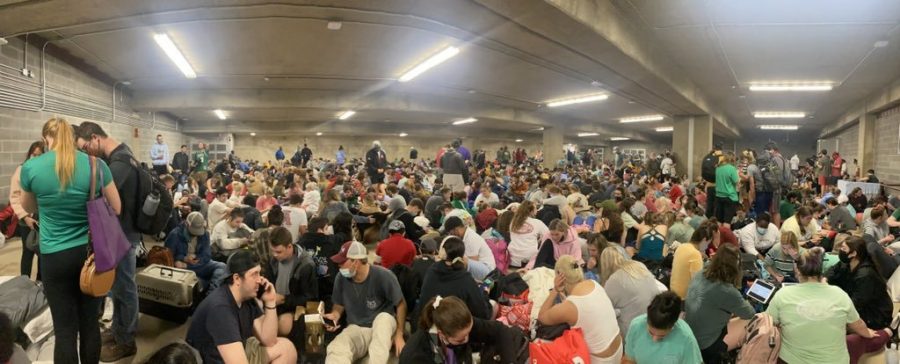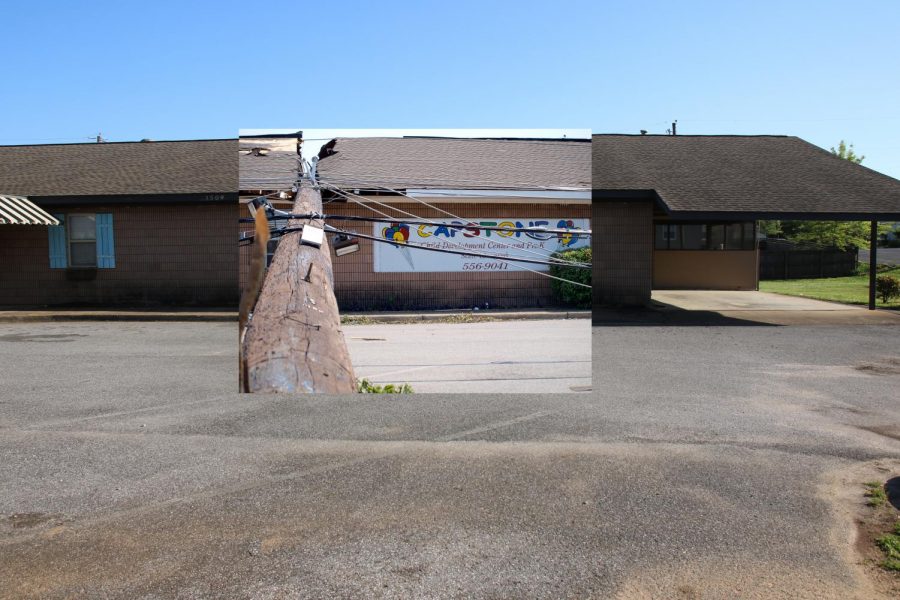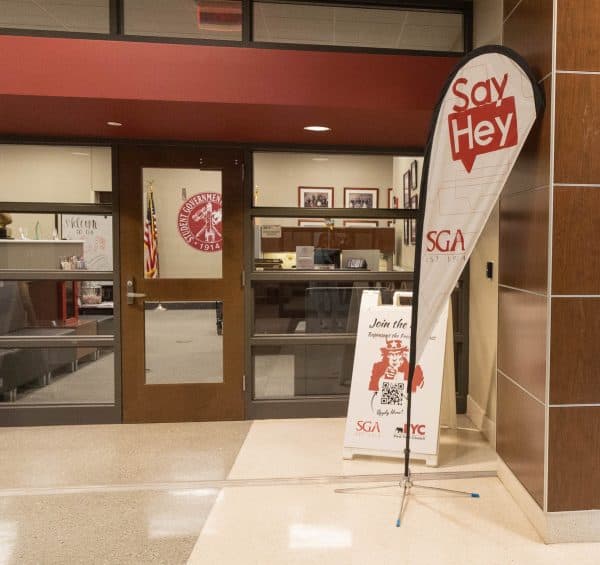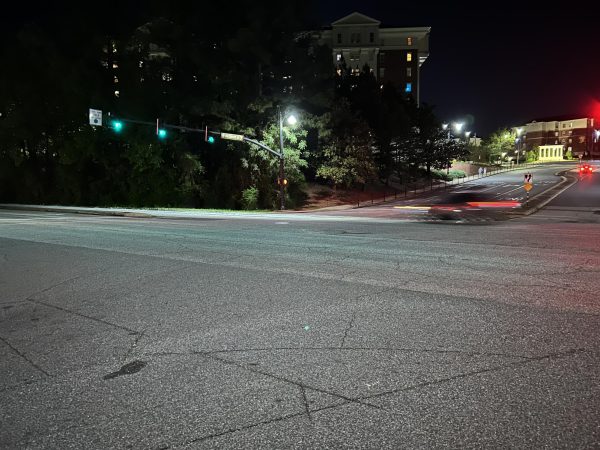‘Like the hand of God’: What 2011 has meant for disaster safety in Tuscaloosa
More shelters. Less housing. Long-lasting grief.
Alabama students took cover in campus shelters as severe weather moved across Alabama in early April of 2021.
April 14, 2021
Donald Keith couldn’t see.
“It was an ominous feeling,” he said. “You never see the city completely dark.”
Keith, director of emergency management for the University, said he’s never felt anything like what he felt in the hours following the April 27, 2011, tornado that killed 64 people – including six UA students – in Tuscaloosa.
As he drove home early in the morning following the tornado, an unusual darkness engulfed the campus and the city, except for a few spots of light powered by generators. Keith would soon find out that the darkness was historic.
Tuscaloosa lost power when it was hit by an EF4 multiple-vortex tornado, one of 360 tornadoes in the 2011 super outbreak that went through Alabama, Arkansas, Georgia, Mississippi and Tennessee. It was the largest tornado outbreak in American history and caused almost $1 billion worth of damage in Tuscaloosa alone.
Mayor Walt Maddox said he still feels stunned by the weight of what happened that day.
“It was like the hand of God slammed down on our city,” he said.
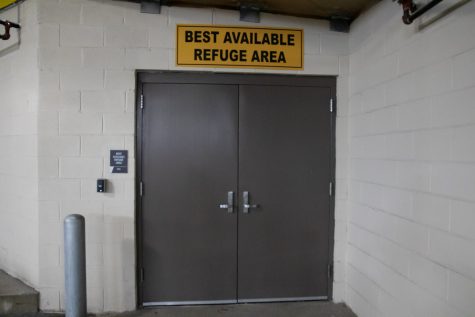
Keeping Students Safe
The safety measures in Tuscaloosa and on campus have changed in the 10 years since the 2011 tornado. There were no campus storm shelters and limited safety alerts in 2011. Tuscaloosa and the University have since prepared for tornadoes and other severe weather events.
Now, there are seven on-campus storm shelters. Coleman Coliseum is also used as needed for shelter during severe weather. The UA Safety App was created in 2017 along with the 92.5 FM UA Radio Station to alert students in case of emergencies. Students and faculty now receive phone calls, texts and emails from the University when the National Weather Service issues an alert for the area.
Victor Luckerson, editor-in-chief of The CW during the tornado outbreak, said he was happy to hear about the expansion of storm shelters and the increased awareness among students.
Before the 2011 tornado, Luckerson said students would often walk outside in severe weather. He remembers the energy in the months after the tornado and said that it’s important to reflect on what has been accomplished.
Tornado sirens on campus are tested on the first Wednesday of every month. In the case of a tornado warning, the University suspends normal operations. These policies were in effect in 2011.
“We need to be continuously improving so that we don’t become complacent,” Keith said. “It’s in the back of everybody’s minds that we always need to make sure that we’re addressing tornadoes.”
Ashley Mims’ daughter, Loryn Brown, was among those who died in the tornado. She planned to attend the University after finishing her last semester at Shelton State Community College. Brown took shelter in her three-bedroom house near Shelton State where she was killed along with her roommate and a friend.
Mims said it was difficult to send her second-oldest daughter, Holly, to the University in Fall 2020.
“Having another student at UA who has had to make many trips to the shelter, I am glad it has become more enforced,” she said. “I don’t want my fears to hold her back.”
Keith said it’s difficult to educate out-of-state students who may not be weather aware – and more than half of UA students are from a different state.
“We have people from all over the world that come here, and many of them have no experience with tornadoes,” he said. “Our population constantly turns over every four years, so it’s hard to get people to understand.”
Jackson Olmstead is a freshman majoring in human resources and public relations. He’s also a Tuscaloosa native who remembers the 2011 tornado. He recalls his parents frantically taking pictures of their belongings for potential insurance claims before they took shelter.
Olmstead said the University has taken “extra caution” since 2011, but could still do more. He said he hopes storm shelters can be integrated in all residence halls so the tornado can be seen as a “turning point for the better.”
Students who are from Tuscaloosa, Olmstead said, will always remember that day.
“The tornado was the only time I’ve ever seen my parents truly afraid of weather,” he said. “Seeing all of the destruction is something I’ll never forget.”
Rebuilding Tuscaloosa
Maddox said that rebuilding is still a top priority for the city.
“We have tried to rebuild the city in a way that honors all those that lost so much,” he said. “We can honor the memory of those we lost by making certain that we build back safer, smarter and stronger.”
Maddox was named Municipal Leader of the Year by American City and County, a publication for local governments, and recognized as a fellow with the Program on Crisis Leadership at Harvard University for his response to the storm.
A common trend in the aftermath of the tornado was how the Tuscaloosa community came together. UA administration coordinated daily with the city government to provide support, and UA students lent their help in the rebuilding process as well.
“The goodness in people came out,” Keith said. “Even though all of our students and employees at the University weren’t necessarily impacted, they wanted to do something to help.”
While the rebuilding efforts have continued, some community members feel like not enough has been done.
Andy Grace, a senior instructor of journalism and creative media, created an Emmy-nominated documentary, “After The Storm,” which premiered in 2015. Grace said he still feels disappointed in the city’s response to the destruction of low-income housing.
“If you’ve driven through Alberta City in the last 10 years, there’s still nothing there,” he said. “We’re sitting on it and waiting for something to happen. It was a pretty vibrant community and now there’s nothing.”
‘What their legacy will be’
Chandra Clark, an assistant professor of journalism and creative media, was in Tuscaloosa in 2011 and has since dedicated her time to studying the role of communication during natural disasters. She said that social media and weather apps have been powerful tools, but severe weather awareness can still be a struggle.
“It still surprises me that there are people who don’t turn to radio and TV stations for weather information,” she said. “I’m always surprised that people don’t turn to the experts who study this every day.”
Evan Smith, owner of the Krispy Kreme destroyed in the storm, said he believes the tornado was the most meaningful event in Tuscaloosa’s history. He said he is amazed by advances in technology since 2011.
“The fact that weather stations can let you know a storm is coming is amazing,” he said. “It should be nearly impossible to get hurt.”
Still, Keith stressed the importance of being prepared for situations that seem impossible. He said emergencies can happen at any time and being prepared is a way to deal with that.
Students on campus now are consistently reminded about potential severe weather threats with campus recently being put on multiple tornado watches and a destructive tornado in Moundville
Mims now hopes to travel around the state of Alabama and teach schools about tornado preparedness in honor of her daughter and those who died in the 2011 tornado.
“I don’t want Loryn or anyone else that died to have died in vain,” she said. “Those of us that they left behind are left with what their legacy will be.”
While the legacy of the storm is still impacting the community a decade later, Mims said she thinks one thing remains a No. 1 priority.
“We have to make all students aware of what can happen,” she said. “They have to understand how bad it can be. We can’t have another April 27, 2011.”

